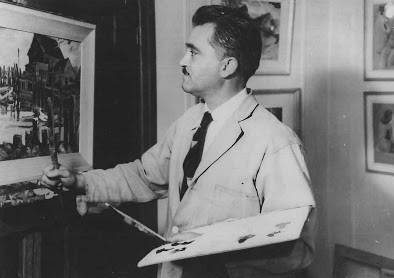
During the WECA period, Educational Projects in Montreal seemed to be putting out the poor cousins of those Toronto and Vancouver comics which were populated with fictional and fantastic crime and Nazi fighters of all shapes and sizes. Canadian Heroes Comics was the bland, sawdusty health bar that was good for you on newsstand shelves packed tightly with shiny-wrapped, colourful candy bars that probably weren’t. Which do you think kids chose as favourites and how do you think this translated to collectors of those old Canadian war-time comics over seven decades later?
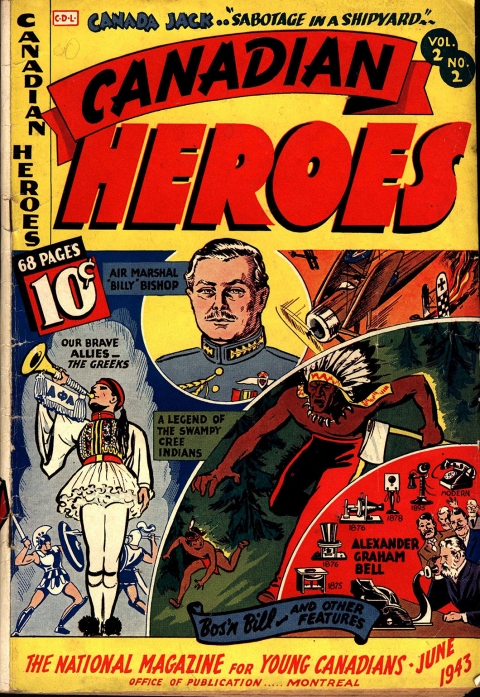
Today Canadian Heroes Comics are generally not as prized as acquisitions as Maple Leaf, Bell Features and Double A books are. But, I think this is an unwarranted and uninformed dismissal of what were the most Canadian of all the war-time comics and probably the most Canadian comics ever.
Educational Projects had a great stable of artists with Joseph Hillenbrand, Sid Barron, N. L. Bassett, and Neda.
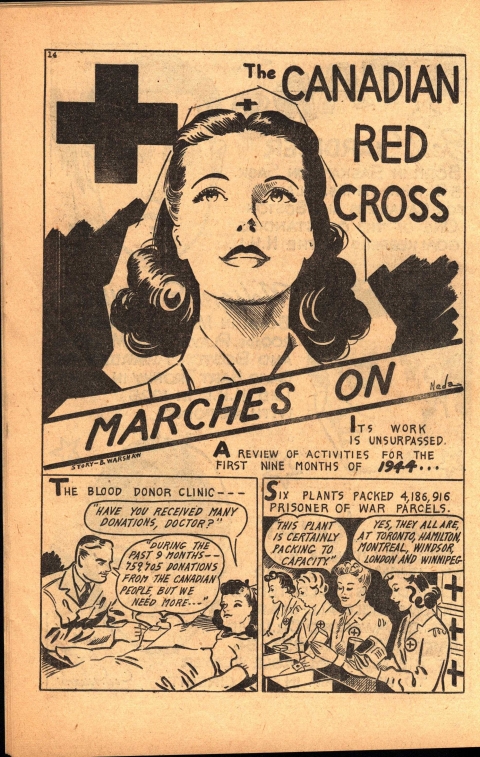
Overseeing them, much in the way that Dingle did at Bell I guess, was George Menendez Rae who did most of the covers, a central feature story about the RCMP and also created Canada Jack. Taste is a very personal thing but, in my opinion, Rae was among the very best, if not the best of the war-time Canadian comic book artists.
His figures were always solid, smooth and gracefully animated where needed. He often used a lot of pencil/charcoal shading that produced an almost wash-like effect. Of all the Canadian Heroes Comics features, Educational Projects saw fit to release compilation issues of only Rae’s RCMP stories (in 1944) and his Canada Jack series (in 1945).
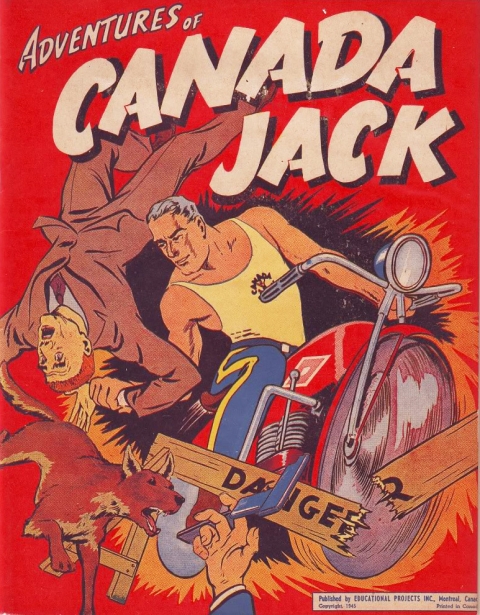
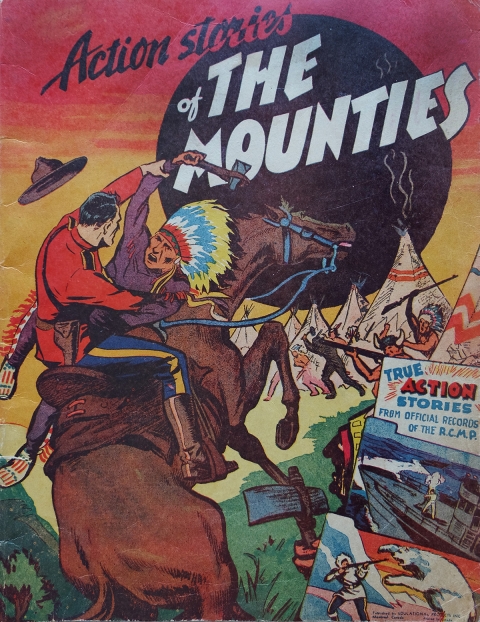
Rae was born in New York City in 1906, though his family came from Spanish and Irish stock. This put him in a tier of Canadian wartime comic book artists born in the early 20th century but before the First World War such as Harry Hall, Oscar Schlienger, The Kulbach twins, Avrom Yanovsky, and Adrian Dingle. They were in their thirties and already had training and experience when they started working in comics and served as mentors and role models for the younger artists. Sometime before the Second World War, Rae moved to Montréal and lived the rest of his life in that area.
Before getting on board with Educational Projects, Rae did a couple of pulp covers for the May and July 1942 issues of Canada’s Uncanny Tales. Both were typically lurid and fantastic as were most pulp covers of the time and quite different from his future comic book work.
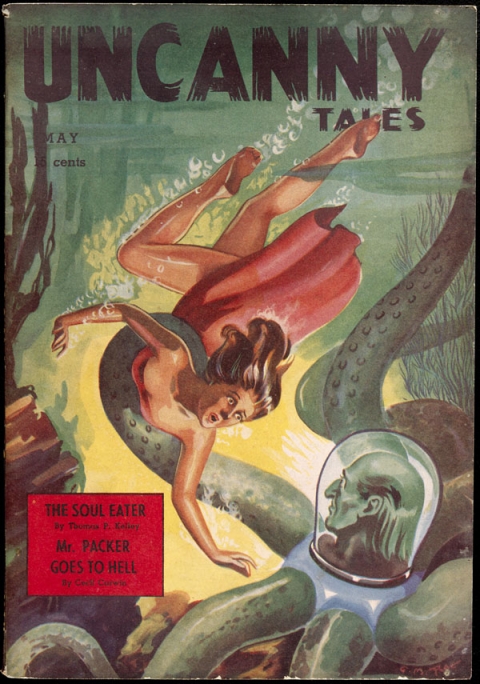
Rae worked for Educational Projects right from the start in the fall of 1942 doing RCMP stories that were, according to the caption on each splash page, “adapted from official records.” He also introduced a series on native Canadian myths, but his most noteworthy creation, Canada Jack, first appeared in the fifth issue of the title. Harry Halperin, the publisher and overseer of Educational Projects felt that Canadian Heroes Comics should have a fictional feature to throw into the mix and Rae came up with a world-class gymnast type, in a tank-top shirt with a small, half-maple leaf emblem in the centre of his chest and smart gymnastic pants that had a stripe going down the side of them and gave him the patriotic name, “Canada Jack.”
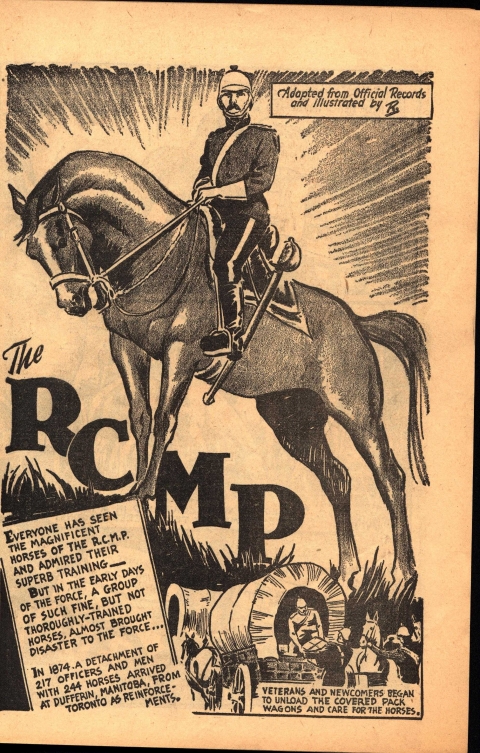
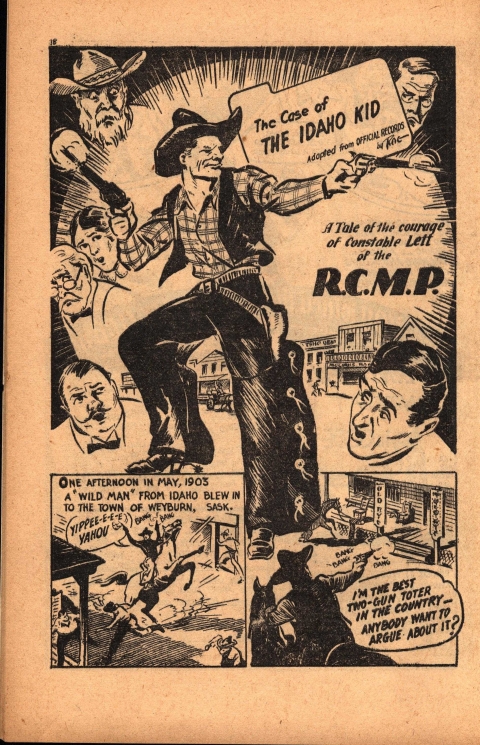
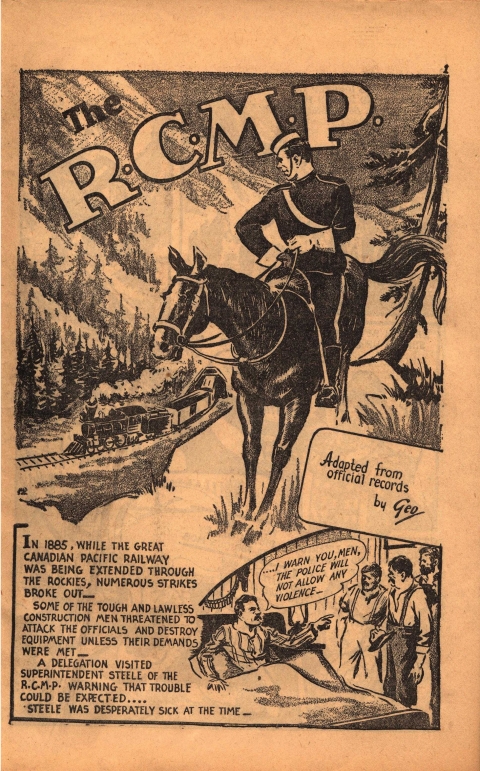
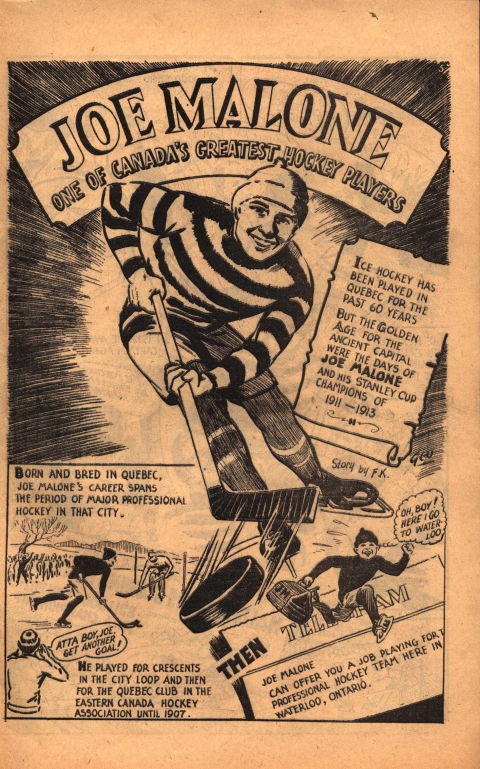
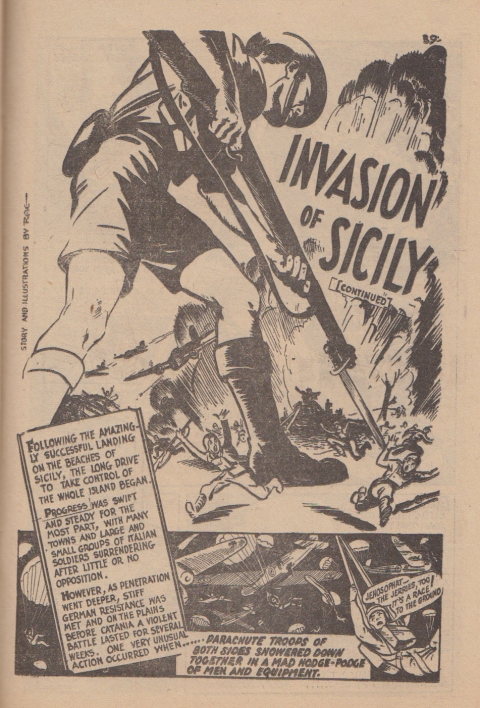
Canada Jack seemed to be the counterpart of Bell Feature’s Johnny Canuck, except for the fact that he never went into a theatre of war, but fought only on the home front against saboteurs and other fifth columnists. It was always a wonder why Canada Jack hadn’t been drafted. His feature stories didn’t appear to be central to the Canadian Heroes comic book. They were always shunted towards the back of each issue and, in the 25 issues that he appeared, he only got on two front covers (apart from his later compilation issue).
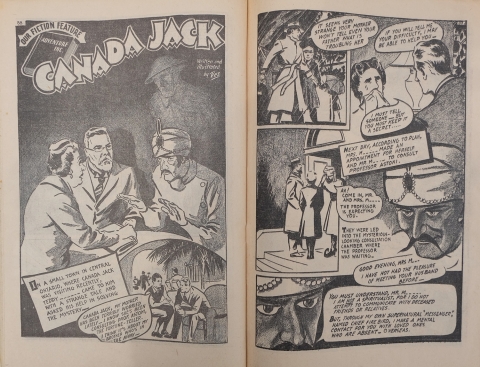
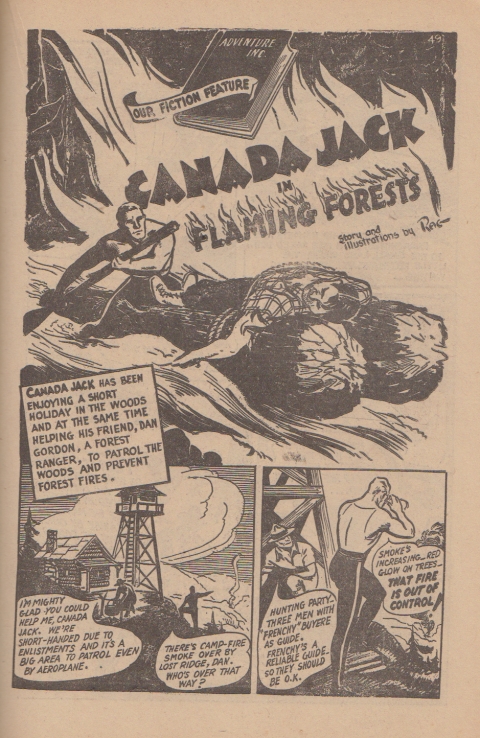
Perhaps more important than the actual Canada Jack stories was the creation of the accompanying Canada Jack Club, which joined kids up across the country in a sort of social network that could make a small contribution to the overall war effort. Of all the kids clubs started by the various war time Canadian comic book companies, the Canada Jack Club seemed to be the most personal because Rae filled the club pages with sketches of the members taken from photos that were sent in.
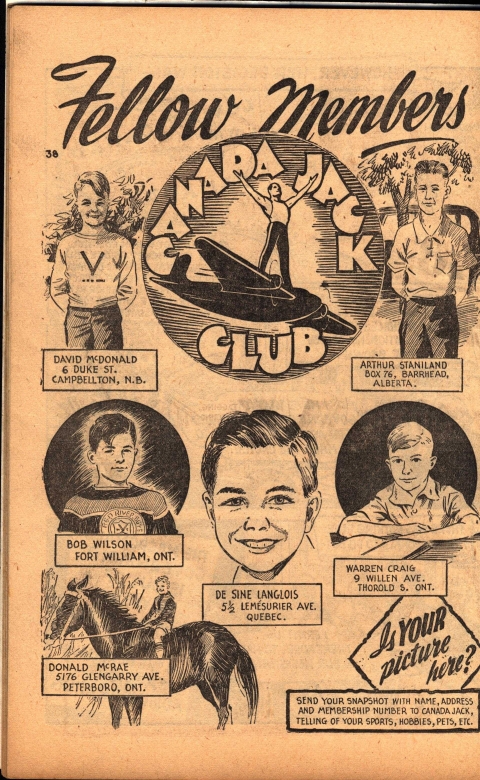
Rae also did a number of stories from Canadian aboriginal myths in the pages of Canadian Heroes Comics. These were rendered with the same deftness and care exhibited in his Mounties and Canada Jack stories.
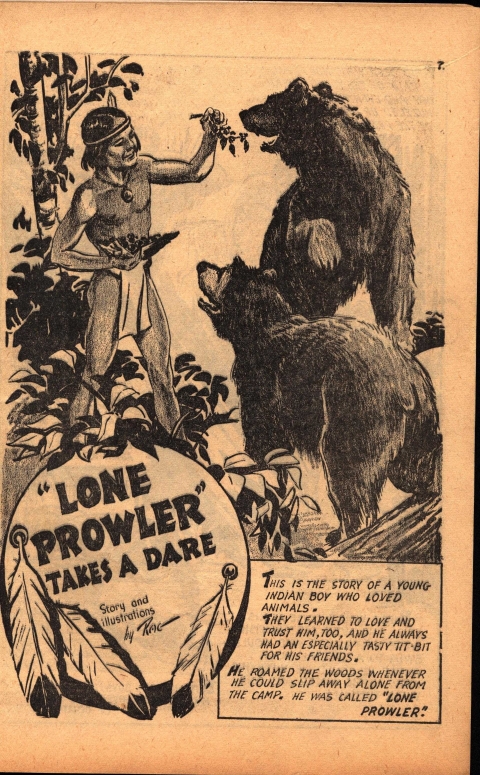
During this time, Rae also designed and did the artwork for the first issue of Canadian Jewish Congress’ giveaway educational comic Jewish War Heroes. Three issues of this came out in 1944-5 with fellow artist from Canadian Heroes Comics, M. Martin doing the art for the last two issues. These three issues were probably Canada’s first giveaway comic.
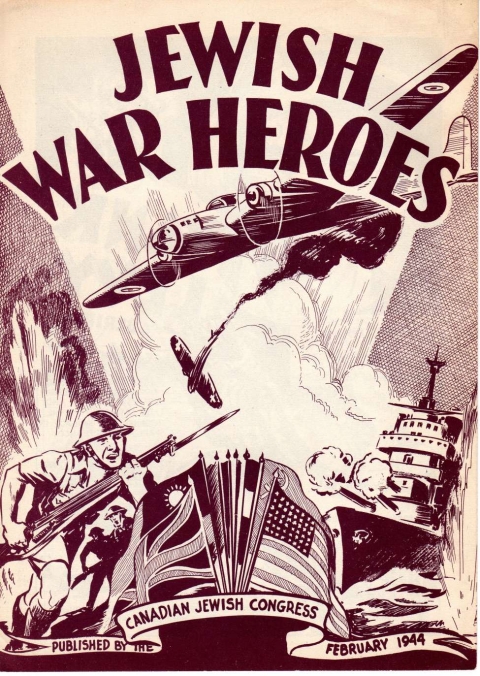
In 1944-5, Educational projects put out a number of paints books and a children’s book. Alt Ray put out a spiral bound children’s book called The Tale of the Jolliwogglebug.
Just after the war, when Educational Projects folded (followed over the next year by the demise of the other three comic book publishers) Rae probably kept on freelancing. In 1948, for example, he did a couple of paperback covers for White Circle Pocket Edition paperbacks.
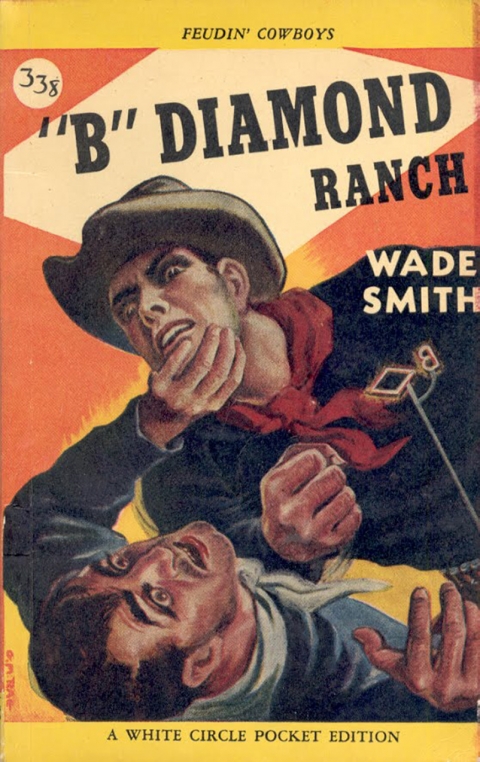
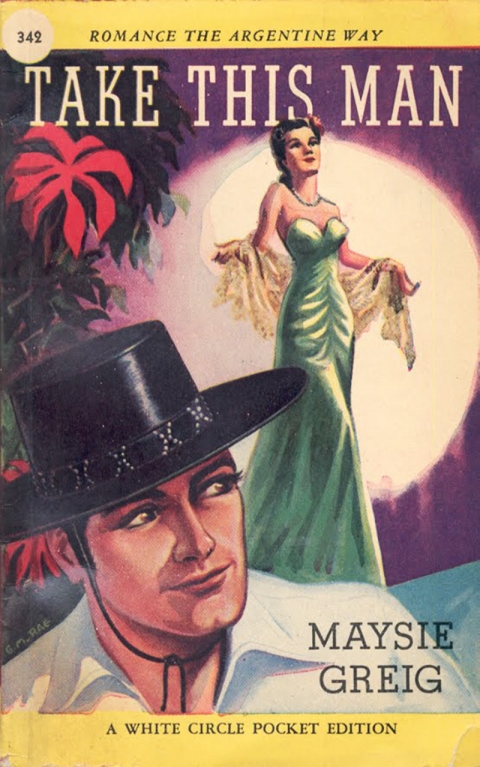
In 1953 he did the dust jacket illustration for a hardcover novel by H. Gordon Green called The Praying Mantis for Brunswick Books in Fredericton.
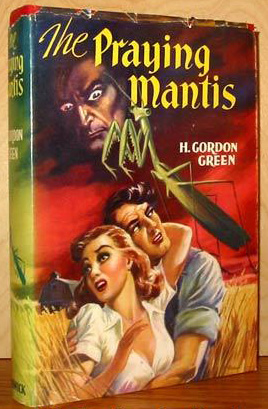
In the late 1950s, Rae moved with his family to St. Bruno, an outlying suburb of Montréal and remained there for the rest of his life. Around the same time, he began working as illustrator and the Artistic director for the Montréal Star and worked there until the paper folded in September of 1979. It was during his time in St. Bruno that he began becoming more seriously interested in fine art. He even served, for a while, as President of the Arts Club of Montreal.
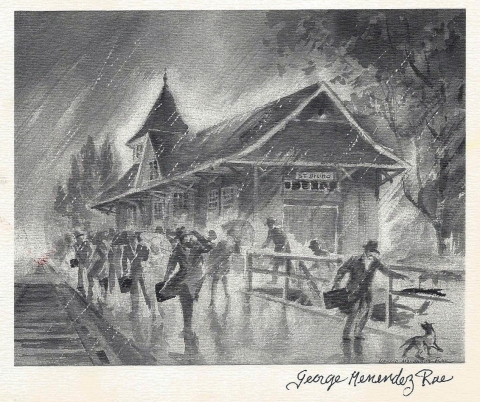
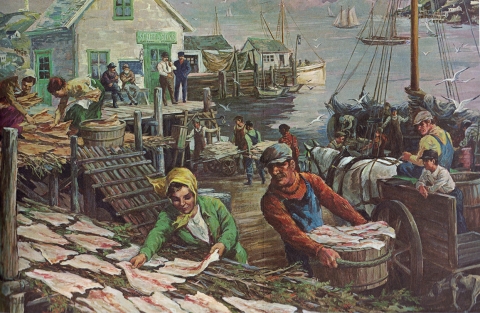
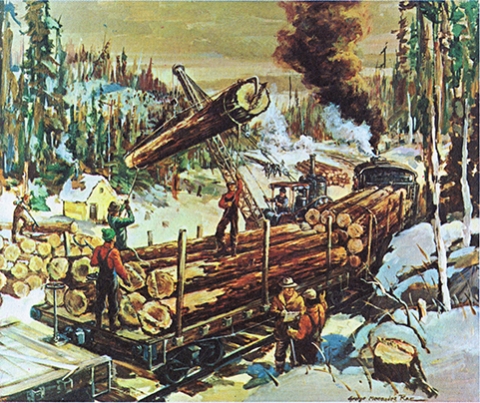
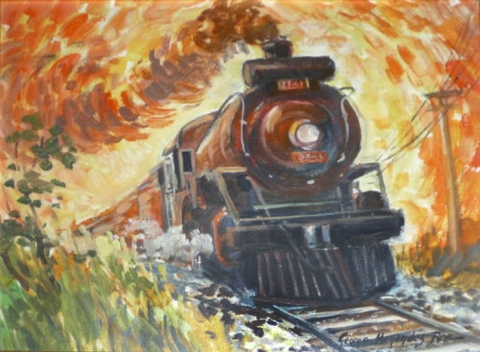
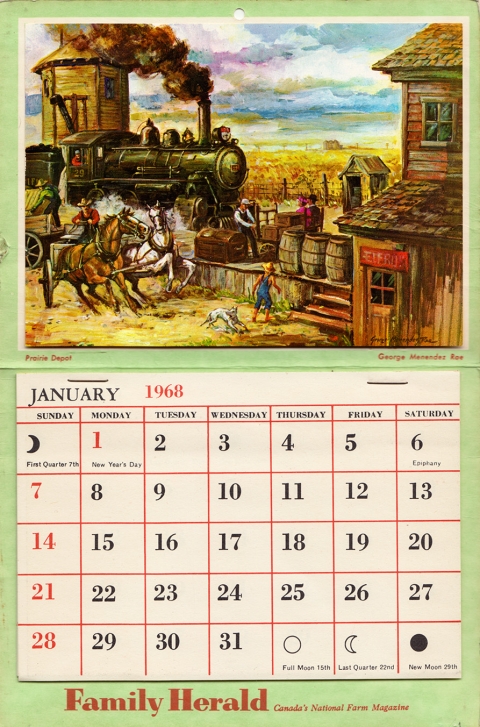
George Menendez Rae died in April, 1992. He was inducted into the Joe Shuster Hall of Fame in 2009.
WECA Price Guide update
We have in place a full listing of all known WECA era comic books (over 750) with first appearances, cover appearances, artists work, etc. indicated to serve as a template. Right now, the four of us (Walter Durajlija, Jim Finlay, Tony Andrews, and myself) are talking through the theoretical frame of reference for the price guide and how it will have to be different from the Overstreet one. Things we are hashing out:
- Our guide is a first effort with very little sales data and we hope it will serve as a guide or a starting point for making a deal on these comics. The sales data from the last couple of years reflects the growing interest in these books and represent a spike in the prices that were common before that. Nothing has really ever been done in this area in the comprehensive way that we are doing and It will get more refined as we go along in later editions.
- Since these issues are generally rare and even more so in high grade, we have proposed to list prices for only 3 grade levels: G 2.0, VG-FN 5.0, and VFN 8.0. This should be enough to serve at least the first edition and tends to put the books into groupings where, for example. The 2.0 price accounts for books in the 1.0 to 3.5 range and the 5.0 accounts for books in the 4.0-6.5 range making the last category books from 7.0-8.5 or so. WECA books 9.0 and up are exceedingly rare and an extrapolated price would need to be negotiated and worked on.
- Walt brings to the discussion the concept of “utility of ownership” which plays a big role in determining how much collectors will pay for WECA books. By “utility of ownership” Walt is describing the idea that collectors will pay higher than normal prices just to have an example of one of these rare books in their collections. The collector feels that he needs to grab up a book in an auction, even if it’s a low grade copy or missing a panel or page, because he doesn’t know if he’ll ever have a chance to pick up another again. So utility of ownership is one of the main principles operating on the low end of the grading spectrum.
- Correspondingly at the high end of the grading spectrum “scarcity of grade” is the main operating principle so that the highest graded known copy can demand multiples of what would be expected with a normal progression of pricing. At the high end of the grading spectrum this overtakes the utility of ownership principle in terms of driving the cost of obtaining the book. Once the highest known grade for a given book becomes known then prices must be adjusted accordingly. The CGC census will have to be employed to determine highest known grades from known slabbed copies. From this should there be an extra pricing column for the highest known grade
- Jim Finlay makes the point that values for the book should be in US dollars since this is the operative value in Overstreet and auctions that these books appear in are usually in the States.
- We are also discussing what the contents of the price guide should entail other than the priced listing of the books themselves. For example, should there be one or two introductory articles; should there be market reports from various advisors/collectors; should there be a full-colour cover gallery; should we have a spotlight feature on a certain artist, character, title or on a single specific issue… and so on?
- The final version should be less than 100 pages with only 750 books to price out making it a slim volume in paperback. What would be a good price point for the book: $9.95; $12.95; $15.95? How often should editions come out: every year, every couple of years…?
All comments, suggestions, ideas concerning the price guide are welcome. Your views and feedback are important to us.

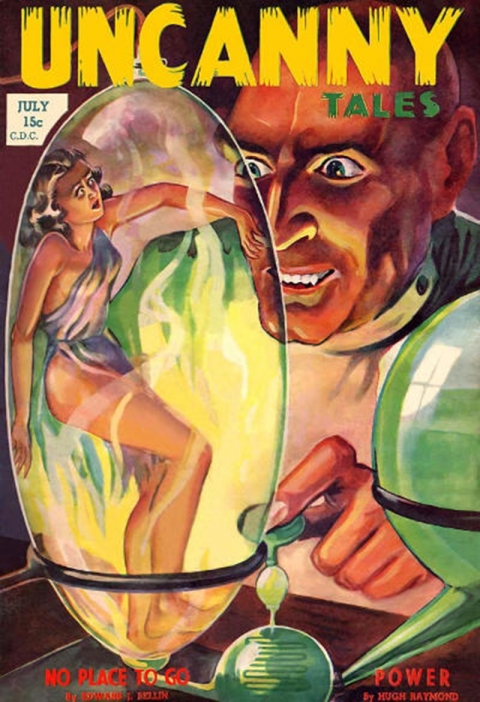
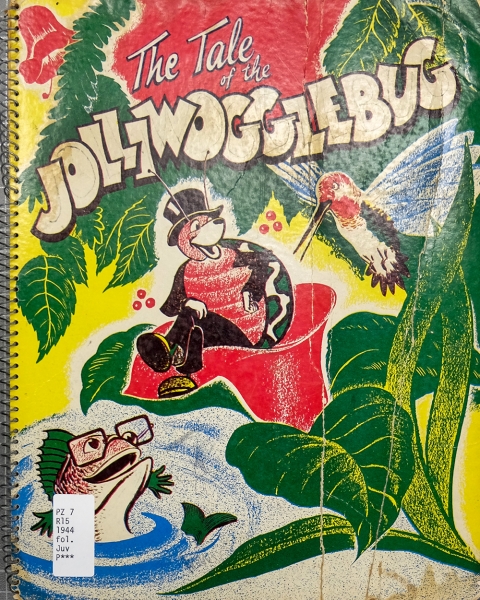
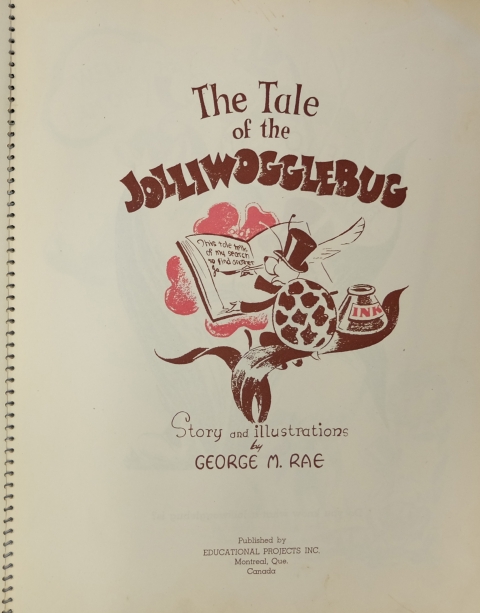
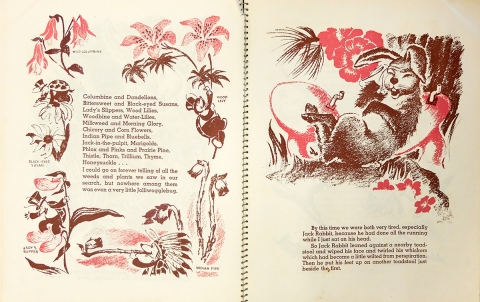



Hey Ivan
For me, George Rae is THE best artist of the WECA period, especially those RCMP stories. He is the main reason I cherish my copies of Canadian Heroes so very much.
My only concern with your points about the price guide is the thought that these prices should be listed in US funds. I know the auction houses and Overstreet operate in US funds, but this is, after all, a Canadian price guide. I say let the buggers do the conversion. We always have to when it works the other way, after all.
Hi Mel part of me agrees with you on the pricing but with how much our damn loonie fluctuates the idea of pricing in American will be easier and may entice more Americans into buying the guide if its user friendly
Mel, I appreciate and look foward to your regular comments on my column. I too champion Rae as the best of the WECA period. I also admire your noble and nationalistic sentiment to have the price guide in Canadian dollars and I’m a giddy inch away from pushing for it, but then we Canadians would probably have to do the conversion calculation just as much because our currency is not the fixed standard and can fluctuate wildly within a single year. It’d be as if we listed the values in barrels or Alberta crude.
I JUST completed my run of Canadian Heroes literally last night with the elusive Vol 5 # 4. I find it amusing and coincidental that the acquisition of the final book was contemporaneous with this wonderful article.
Well done, Stephen. I only have a handful of Canadian Heroes Comics but, ironically, that’s one I do have. It’s one of the few with work by well-known Bell Features artists Harry Brunt and Fred Kelly in it. I guess they were increasing their options as the Canadian books were coming to an end. We’ll be sure to make a note of its scarcity in the guide. Completing a run of a WECA title is grand accomplishment.
Folks, since alot of these great comics are relatively unattainable to the average collector an emphasis on photos and information would be key for me. Let’s be honest, from the time you amass the sales numbers to the time the book is published the prices might be quite off as is often the situation with Overstreet (how much does Overstreet list a mint copy of Captain Canuck Reborn #3 for?) .
So making this more of a reference encyclopedia with lots of images of the rare books and their values would appeal to me more than just a table of dollar amounts and tiny black and white thumbnails.
I’m really looking forward to this. I would think that even though prices are rising with people’s general awareness, the fluctuation isn’t that dramatic overall. Based on that, and the low number of overall sales, releasing an update really only needs to be done every few years.
I don’t know if people think it would dilute the guide too much, but filler prices/listings of the Canadian publishers after the WECA period ended until they closed shop a few years later would be interesting. and could even spark some interest.
Martin, good point about emphasizing the overall information side of the books themselves and not just the price information. Many people might pick up this guide just to find out more about these books and in case they ever run across one in a find–they should know what it is. I guess, if you are a collector, or even a dealer, you should know what these things are and be able to recognize them.
On the other hand, I don’t know if you can overlay the Overstreet template on the pricing for the WECA books. There are not enough sales throughout a year to produce lags in reporting prices and keeping them up to date and on top of this prices for these books (and this must be noted in the guide) can be absolutely unpredictable because of that “utility of ownership” factor. People want to own a 1945 Nelvana compendium because of the character and that great cover, so when one comes up it’s hard to predict where it will go. I suppose there’s only the merest trickle of data on WECA books in the GPA resources and they must essentially be useless when preparing a bid on one of these books. I hope that we will make our guide a book for collectors and not a book for speculators. True, these books have reached prices that put them out of the range of a lot of collectors in the hobby, but I think a lot of these collectors may splurge above their usual range here and there just to get an example of one of these books into their collection. Our job with this book is not to keep current with trends in the way that Overstreet and GPA chase this, but to supply a framework for collectors so that they can be informed, on the basis of our experience as collectors of these books, when they go into a deal for one of these books.
Chris, I agree that new editions of the WECA price guide probably need to appear every three or four years or so because trade in these books is not the stock market whirlwind that trade in American books is. Again, I see the most important part of our book is that it is intended for collectors and not speculators (maybe the original first few editions of Overstreet started out in this way too?).
As for an accounting of the FECA period (1947-56) or what is also known as the reprint period–this is a huge task with many unknown books to be discovered. It’s certainly something down the road, but it would need a pretty big team because there are way more books that just the 750 or so of the war time books.
I do think we need to have a small section on the the significant 1947-52 books, such as the F. E. Howard Dizzy Don comics and Super Duper comics No. 3 as well as some of the Export Publications books, since they have a tie-in with the WECA books and are uniquely Canadian.
you guys might want to take a look at a site called “the acaeum”. they catalog all the d&d stuff. they have a price guide that they update on line every once in a while when sales happen. different than a printed book. but they have the same problem. a lot of the stuff doesn’t trade/get sold very often. just an idea. not sure if it helps or not
https://www.acaeum.com/index.html
Good suggestion, Nestor. I took a look at the site and it’s a way that the guide could possibly go in the future. However, it’s important to me, and probably a lot of collectors to have a physical book of information about The Whites that I can put on my shelf with the rest of my comic related literature and be able to take it down and enjoy reading it without needing a screen or a connection to do so. Maybe this is too old school, but I never deny that I’m an old fart who is enjoying retirement.
and i really like that guy in the skirt, first picture, bottom left corner. very nice
Not surprising, Nestor, with your name originally coming from the King of Pylos in Homer’s Iliad. The Greek Evzones have a tremendous tradition as light infantry and mountain units. I say this in the hope that your comment is relatively free of sarcasm.
War is butchery, and certain Roman Infantry fought naked except for small patches of insignia and Helmit. I was lucky enough to purchase that One Shot Canada Jack back in the ’90s from a Canadian Dealer, I believe from Calvin Solovian, and for several hundred dollars. It ‘s a High Grade Copy, and i took a chance on it ,and was delighted with It. It was the only time i”d seen a copy for sale!
Great get, Stephen. Calvin Slobodian always had great comics, but only ever had a few Whites like most dealers. People like you who were lucky enough to pick up a couple copies decades ago realize now how lucky they were and how precious their purchase is now that we know more about them. I assume you never slabbed it or you would have had a number grade to share with us. Wait and see what sort of price range we assign that book in the price guide.
Ivan, yes. no sarcasm at all. i have (had, doesn’t fit any more) a “skirt” like that. lol. i actually emailed that cover to a friend of mine who’s the president of the Greek community in Toronto. i’m sure he’s going to love it.
Sorry in skirting around you Nestor. ( I love to try all types of design,fabrics,colors, and how i feel inside without hang ups of Gender issues). Ivan=Got the book before the launching of any comic grading company. In fact i bought a smattering of GA B&Ws in the mid-“80s! I’m guessing that One Shot at least a 9.0!
Great get, then, Stephen! I’ve found that WECA books above a 7.0 are generally scarce and our price guide will try to reflect this. That Canada Jack compendium must be one of the most beautifully drawn books from the Canadian golden age.
So Stephen, now that you have a complete run of Canadian Heroes, when are you going to scan them all for the Canada’s Own Comics website? So far, precious few people have offered up scans of their comics for the project. With a price guide in the works, wouldn’t samples of each cover come in handy for collecting data? It would also be great to eventually publish something similar to a Gerber photo-journal guide of Canadian comics. After all, it wouldn’t be as enormous an undertaking as the Gerber guides. Come on, you guys! Pony up those comics for the database! Canada’s Own Comics needs YOU!
Hi Mel.
I will endeavor to scan the missing ones for Canada’s Own.
BTW, My Canada Jack One-Shot is Certified CGC 8.5 Universal blue, with off-white pages. that book is EXTREMELY rare, with only 5 known copies, if you include Stephen Keisman’s copy. The Action Stories of the Mounties Educational Projects ONE-SHOT is common in comparison. I also possess the Vancouver Pedigree of Action Stories of the Mounties that has been certified CGC 9.0 Universal blue, with WHITE pages!
Ivan, thanks again for a nice overview of a major Canadian cartoonist and a key figure in comics history. As your last image hints, Rae had a long association with the Family Herald magazine, serving as an its art director I think until it folded in the 60. He did illustration and design for it and hired other artists, including some cartoonists. Family Herald also published Jimmy Frise and Doug Wright’s Juniper Junction strip.
Always nice to hear from you Bryan, especially with your expertise. I have always thought that The Family Herald Magazine was an insert with the Weekend (Montreal) Star and since Rae was the Artistic Director for the Montreal Star, He would have overseen the weekend magazine portion of it as well. I love to find old Canadian magazines from the last century just to see who did the cartoons and illustrations in them. There were such great talents, and some of them were our very own Canadian Whites artists. Gerald Lazare often talks about the golden age of illustration in magazines during the 50s and 60s it’s too bad photography took over in the last quarter of the past century and then everything went digital.
I’m impressed by the number of posters who have given input to a price guide.
I’m even more impressed as to the hunger for it being more than just a price guide.
In order of post date:
Martin:
You’re right about how off the prices can be and we are trying to take where the market has been going and where it is now and find a balance between what the average buyer is willing to pay and what was paid for low grade books in the 2014 Comiclink that was driven by buyers used to scarcity.
I think increased awareness of Canadian Whites and plenty of information in this price guide will bring more books to market and a heathier market for books to move from one generation to another of collectors.
I want it to be the furthest away from the highly condensed, black and white world of the OSPG and with the smaller number of issues of Canadian Whites we should be able to turn up the info on each book and make it the most colourful it can be with lots of full colour covers.
My favourite Whites are the few that were in colour like Wow #1 and I would love to see a reprint of that book in the near future.
In order of posts:
Mel:
I think that the most important thing we can do now is make sure this important era in Canadian history and Canadian comics is not just remembered but to be rallied around and bridged to the present and future.
We have a great history of Canadian talent in the comics that has always been over shadowed by the larger US publishers and number of collectors.
I hope Canada in the future has a stronger Canadian comic industry centered around all the talented Canadians that want to create their own work in Canada and its up to Canadian Collectors to step up and support them.
This is the worse time to put out a Canadian Price guide in Canadian Dollars if its not going to be redone for a few years at the earliest, as Ivan mentioned, due to our Oil price based economy.
This is as important to a Canadian collector as to a collector in the US while there is a short term imbalance in our currencies.
Chris:
Post WECA books, while interesting, are a whole lot different than WECA books.
Most have the barest of “Canadian” to them, and are often, dare I say, a butchered and poor print quality to them, in general.
That being said, there are some gems, mostly in terms of unique covers or unexpected interiors, and more importantly bridge material that unifies the entire Golden Age without all the puritan arguments as to what makes a Canadian Golden Age book.
That has always been my long term goal to look at the entire era of Canadian Comics as one period and I agree with you that they are important to record their history and have been doing that with my own project.
I think there is a great future for Canadian Collectors and sellers and the near future is going to be the Golden Age of collecting Canadian books.
Jim
[email protected]
In the first couple of decades of collecting, we referred to any comic books published outside of the U.S.A as “Foreign comic books”. Today, collecting and investing is Global, with Biblical research material available on all Countries!! I’m more optimistic then my comic book collector friend Charlie concerning recent Cols.
This whole renaissance of Canadian golden age comics is an amazing treat for some of we old farts. These are books that we heard about in the 70s and largely ignored. I remember in the late 60s George Henderson had a box of dollar books, including…you guessed it! If I had only known!! It wasn’t until my encounter with Harry Kremer in the 80s that I realized that here was a treasure trove of Canadian pop culture that outshone my Marvelmania.
Again, I urge anybody with Canadian comics, heretofore absent from the Canada’s Own Comics database, to get those babies scanned for future generations.
Ivan has undertaken a noble task in documenting this slice of our collective history, and he deserves that effort on all our parts.
I should also add that Ivan is a very gracious guest, even when he does rearrange your dining room to accommodate his scanner. : )
Mel maybe I will be able to make a trip with Ivan sometime to meet you in person as I would enjoy talking comics with you
Tony, I’d love to help out with that. One joy of being a collector is occasionally getting together with like minds and great minds over a little food and drink. We older farts have a lot to remember and a lot to share with others who will listen and especially with others who would understand.
We will discuss this further than in a couple of Saturdays then Ivan , i would love to meet Mel and listen to everything he has to say I feel I would be regaled for hours
Hey Tony
That sounds like a great idea. I’m always up for a good old-fashioned gabfest with like-minded comic fans. Having been a collector, creator and historian of comics for some 46 years, the hardest part about talking with me is getting me to shut up. But, if you’re up for the challenge, I would love to get together over pizza and beer, or sarsparilla for Ivan. I always have a great time talking with him, And, lets face it, when it comes to comic geeks, the more the merrier.
NOW! Everybody get out there and scan your books for the database!
I had intended to comment that George Rae had also done paintings (at least in the 60s if not even earlier) for covers of the old Rod & Gun club magazine.
Thanks for this info, Jim. I was not aware of them. I think the more we become aware of who these artists were behind the war time comics, the more we will find that they have done, especially from the time that they left comics.